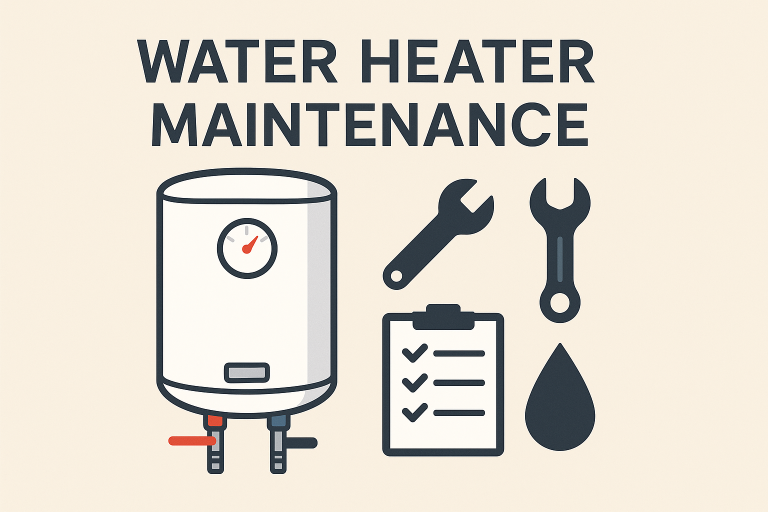Water heater maintenance is essential to ensure consistent performance and avoid costly repairs. A well-maintained water heater provides reliable hot water and operates efficiently throughout its lifespan.
Understanding how to flush a water heater is a foundational step that removes sediment buildup and improves system function. Regular care also helps to extend water heater lifespan, saving money over time.
Following a clear plumbing maintenance checklist streamlines routine upkeep and addresses common issues early. Scheduling an annual water heater service with professionals uncovers hidden problems before they escalate.
One of the biggest challenges water heaters face is water heater sediment buildup, which impacts energy use and durability.
Read more Water Heater Maintenance Checklist: Keep Yours Running Like New
Mastering the Art of Flushing Your Water Heater
Flushing your water heater is a vital maintenance task that prevents sediment buildup from compromising performance. Over time, minerals and debris settle at the tank’s bottom, reducing heating efficiency and increasing energy costs.
To flush the tank, begin by turning off the power or gas supply. Attach a hose to the drain valve and direct it to a safe drainage location. Open the valve and allow the water to drain completely. Opening a hot water faucet inside your home speeds up the draining process by allowing air to enter the system.
Once drained, briefly open the cold water supply valve to flush out any remaining sediment. Repeat until the water runs clear. Close the drain valve, refill the tank, and restore power or gas.
Simple Habits to Extend Water Heater Lifespan
Taking small, consistent steps significantly improves your water heater’s longevity. Temperature management is one of the easiest ways to protect the unit. Setting the thermostat to 120 degrees Fahrenheit reduces stress on heating elements and minimizes mineral accumulation.
Inspecting and replacing the anode rod yearly also plays a critical role. This rod attracts corrosive minerals, protecting the tank’s interior from rust. When the rod wears down, the tank becomes vulnerable to corrosion, shortening its service life.
Monitoring pressure relief valves adds another safety layer. Ensuring these valves operate properly prevents dangerous pressure buildup inside the tank.
Combining these habits with an annual water heater service completes a strong maintenance routine. This approach effectively helps to extend water heater lifespan and maintain optimal efficiency.
Your Essential Plumbing Maintenance Checklist
Maintaining your water heater involves more than just the unit itself. A well-rounded plumbing maintenance checklist ensures the entire system operates smoothly and safely.
Start by inspecting all visible pipes and fittings for leaks or corrosion. Even minor drips waste water and could damage surrounding areas. Prompt repairs prevent further complications.
Test the drain valve regularly to confirm it opens and closes easily. A malfunctioning valve disrupts the process of how to flush a water heater and may contribute to sediment problems.
Check the temperature and pressure relief valve annually. This device safeguards against excessive pressure that might damage the tank. Replace faulty valves immediately.
Watch for signs of rust or moisture near the base of the tank. These indicators require immediate professional attention to prevent serious damage.
Why Annual Water Heater Service Matters
Scheduling an annual water heater service is crucial to maintain your system’s safety and efficiency. Professionals conduct thorough inspections, identifying potential problems before they escalate.
During the service, the technician drains and flushes the tank to eliminate water heater sediment buildup. This step improves heating efficiency and reduces wear on components.
Key parts such as thermostats, anode rods, and pressure relief valves receive detailed checks. Ensuring these elements function properly prevents leaks, corrosion, and pressure issues.
Read more How Often Should You Service Your Water Heater?
Understanding and Preventing Water Heater Sediment Buildup
Water heater sediment buildup results from minerals in water settling at the tank’s bottom. This accumulation creates a barrier between the heating element and water, reducing efficiency and causing uneven heating.
Over time, sediment leads to higher energy consumption and noisy operation. If left unchecked, it can cause corrosion and damage the tank.
Preventing sediment buildup requires regular maintenance, especially how to flush a water heater properly. Using softened water in areas with hard water also helps reduce mineral deposits.
Early signs include rumbling noises, discolored water, or reduced hot water supply. Addressing these symptoms quickly prevents costly repairs and extends your water heater’s service life.
Conclusion
Consistent water heater maintenance ensures reliable hot water and prevents unexpected breakdowns. Mastering how to flush a water heater and following a thorough plumbing maintenance checklist protects your investment.
Regular inspections and annual water heater service detect issues early, helping to extend water heater lifespan. Addressing water heater sediment buildup promptly improves energy efficiency and system safety.
We encourage making these maintenance steps a priority. Doing so provides peace of mind and keeps your home comfortable year-round.
FAQs
How often should I flush my water heater?
Flushing the tank once every 12 months prevents sediment buildup and maintains heating efficiency.
What temperature should my water heater be set to?
Setting the thermostat to 120 degrees Fahrenheit balances safety, energy savings, and comfort.
Why is my water heater making rumbling noises?
Rumbling often indicates water heater sediment buildup causing uneven heating.
What does an annual water heater service include?
It involves flushing the tank, inspecting key components like the anode rod and valves, and checking for leaks or corrosion.
How does regular maintenance extend my water heater lifespan?
Routine care reduces wear, prevents corrosion, and keeps the system running efficiently longer.

